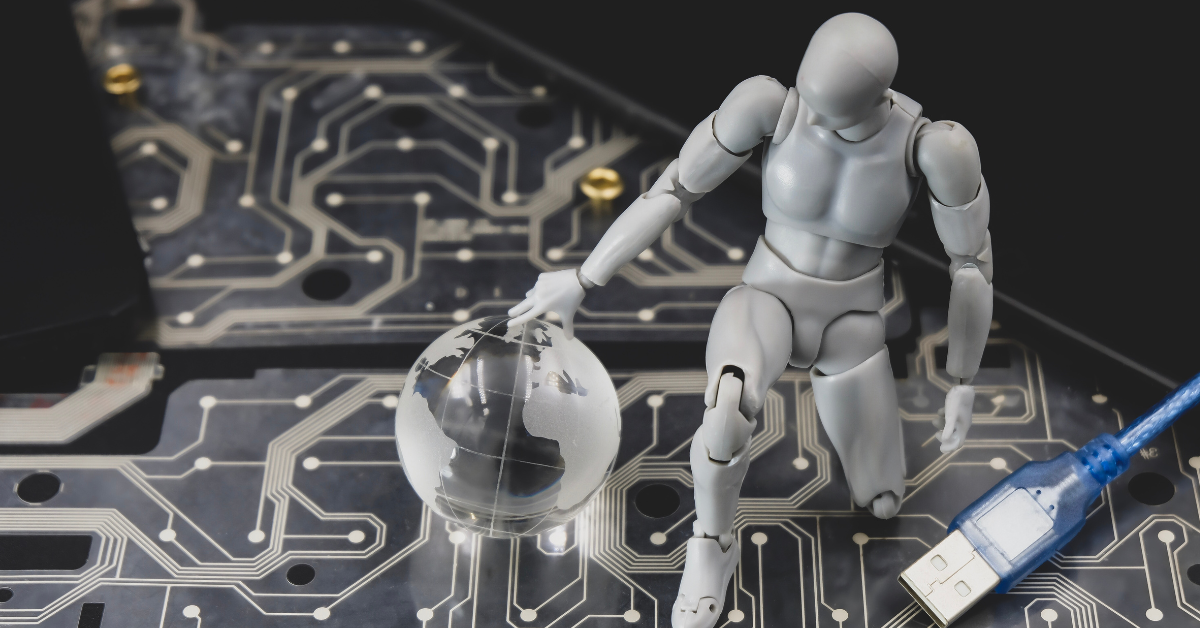Artificial Intelligence (AI) and Machine Learning (ML) have revolutionised a plethora of industries, and software development is no exception. Software developers now have powerful tools and techniques at their disposal to enhance productivity, improve efficiency, and build intelligent applications. This article explores the profound impact of AI and ML on each stage of the software development lifecycle, how they’re being used within software applications and what this means for the future of the industry.
—
The impact on the software development lifecycle
Requirements gathering
ML algorithms excel at analysing vast amounts of data and extracting meaningful insights. In software development, this capability can be harnessed to make informed decisions. By leveraging ML algorithms, developers can gain valuable insights into user behaviour, preferences, and patterns, allowing them to create personalised experiences and tailor software solutions accordingly.
Project Management
AI-powered project management tools can assist in task allocation, estimation, and progress tracking. ML algorithms can analyse historical data to predict project timelines and provide intelligent recommendations to developers, enhancing collaboration and decision-making within agile teams.
Software design
AI can enhance software design by powering smart prototyping. AI can analyse user behaviour, identify patterns, and offer predictive insights that guide the creation of intuitive user interfaces and streamline the iterative design process. Designers can use AI tools to simulate user interactions, test different design variations, and gather valuable feedback to refine their software designs before development.
Software development
The advent of transformer models in machine learning has led to vastly sophisticated natural language models, like ChatGPT. These in turn have birthed code creation tools which are able to generate code from simple comments or lines of existing code. This automation standardises code, reducing the likelihood of human error. Some examples are elucidated below:
- Commit Assistant AI is an AI-powered tool designed to assist developers in writing better commit messages for their code changes. It analyses the code changes made by the developer and suggests relevant commit message templates or generates commit message suggestions based on the context.

- Tara and Kite are AI-powered tools that aim to enhance the coding experience by providing intelligent code completion suggestions and assisting with code-related tasks. These tools leverage machine learning algorithms to analyse code context, programming patterns, and external code repositories to offer relevant code suggestions in real-time.
- ML-enabled code creation tools like Copilot, CodeWhisperer, and Tabnine go beyond code completion and provide advanced capabilities for generating code snippets and assisting with code writing tasks. These tools utilise machine learning models trained on vast code repositories to predict and generate code based on contextual information and coding patterns. They can generate entire functions or classes based on partial code, provide suggestions for completing code blocks, and even offer refactoring recommendations. These tools excel at assisting developers in writing code from scratch, improving productivity, and reducing manual coding effort.
Continuous Integration and Deployment
AI and ML tools facilitate the implementation of Continuous Integration and Continuous Deployment (CI/CD) practices. ML algorithms can automatically analyse code changes, evaluate test results, and provide feedback to developers. This enables faster and more efficient integration of new features and enhancements while maintaining software quality and stability.
Maintenance
Software bugs and glitches are common challenges faced by developers. However, AI and ML techniques can aid in bug detection and troubleshooting. ML algorithms can analyse code repositories, identify patterns, and predict potential bugs, enabling developers to proactively address them. Additionally, AI-powered monitoring systems can detect anomalies in real-time, assisting in debugging and enhancing the overall stability of software applications.
The integration of ML and AI into software applications
We’ve long since seen the introduction of AI into various software applications. In e-commerce applications we see the deployment of recommender systems, which analyse large datasets to provide personalised recommendations. In customer services, we see AI-powered chatbots use natural language processing to answer customer queries and feedback. This will continue to grow in sophistication. Customer facing tools will continue to enhance the customer experience in different ways. In the meantime, internally used tools will be increasingly utilised to support business functions and automate tasks.
Future considerations
The integration of AI and ML in software development raises important questions about the future of developer jobs and the overall landscape of the industry. However, while AI can automate repetitive tasks, they are not expected to replace developers entirely. ‘Software 2.0’ – a term which encapsulates the shift toward AI powered software development – will reshape the roles of developers. Developers will be empowered to focus on more complex and creative aspects of software development. As a result, developers will need to acquire new skills to effectively work alongside AI systems and leverage their capabilities.
It’s likely that some of the existing free tools which have democratised artificial intelligent, will soon become commercialised. This will greatly affect businesses which have come to rely on AI tools. Additionally, there will be increasing legislation on the use of AI to ensure ethical and responsible AI. To avoid costly overhauls in the future, businesses should be mindful of research into AI safety and the direction this will likely take in terms of future legislation.
Conclusion
The impact of Artificial Intelligence and Machine Learning on software development has been transformative. These technologies offer developers advanced tools, automation capabilities, and intelligent insights that significantly enhance productivity, efficiency, and user experience. With the continued advancements in AI and ML, software development is poised to become even more sophisticated, enabling the creation of innovative and intelligent applications in the future. However, businesses need to be mindful of changes on the horizon, both in terms of commercialisation and also legislatively.
—
Are you looking for software developers who stay up to date with the latest AI developments? Specialists who continuously improve their skills? Look no further. Contact a PL Talents expert today, and we will connect you with the right candidates in no time.

